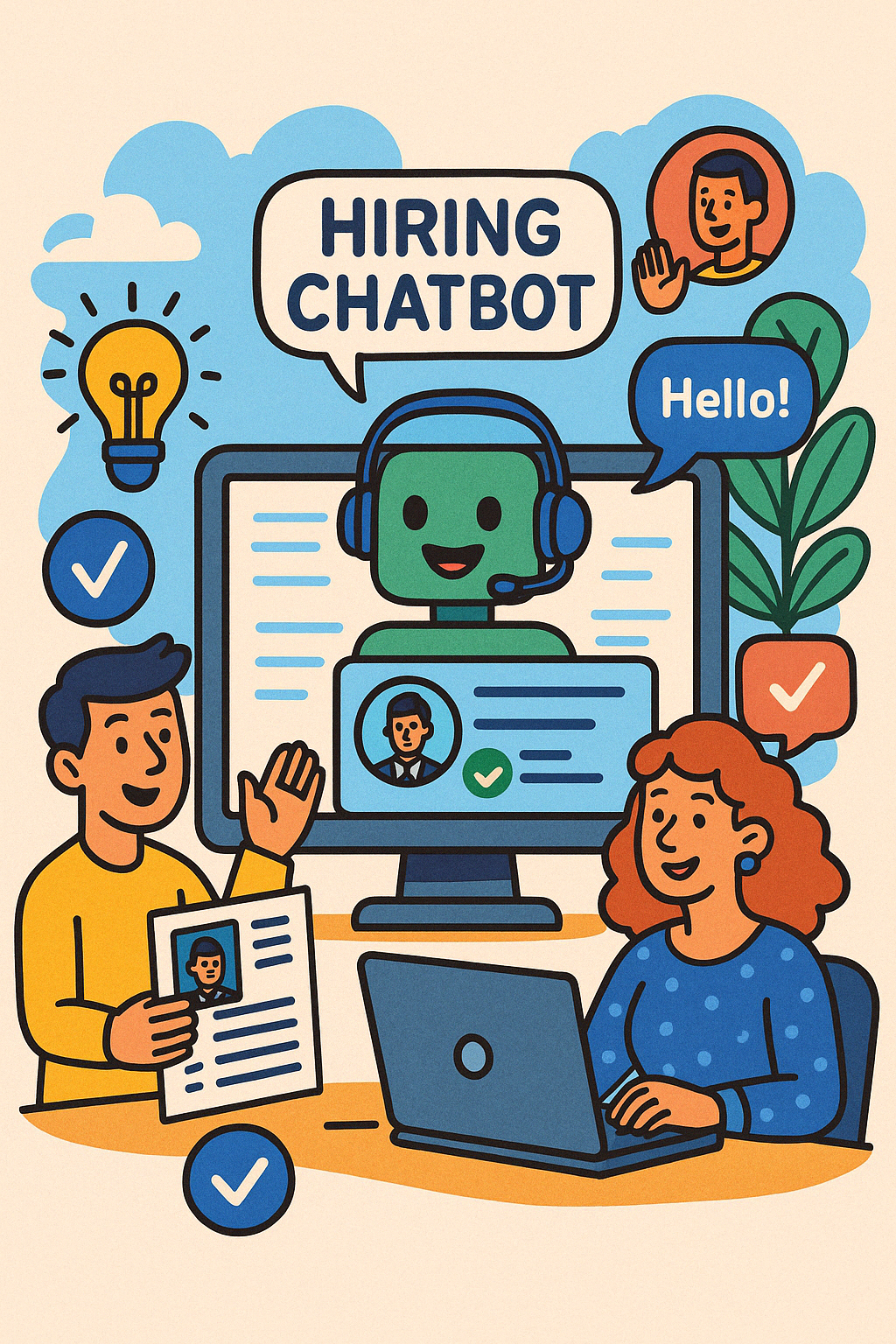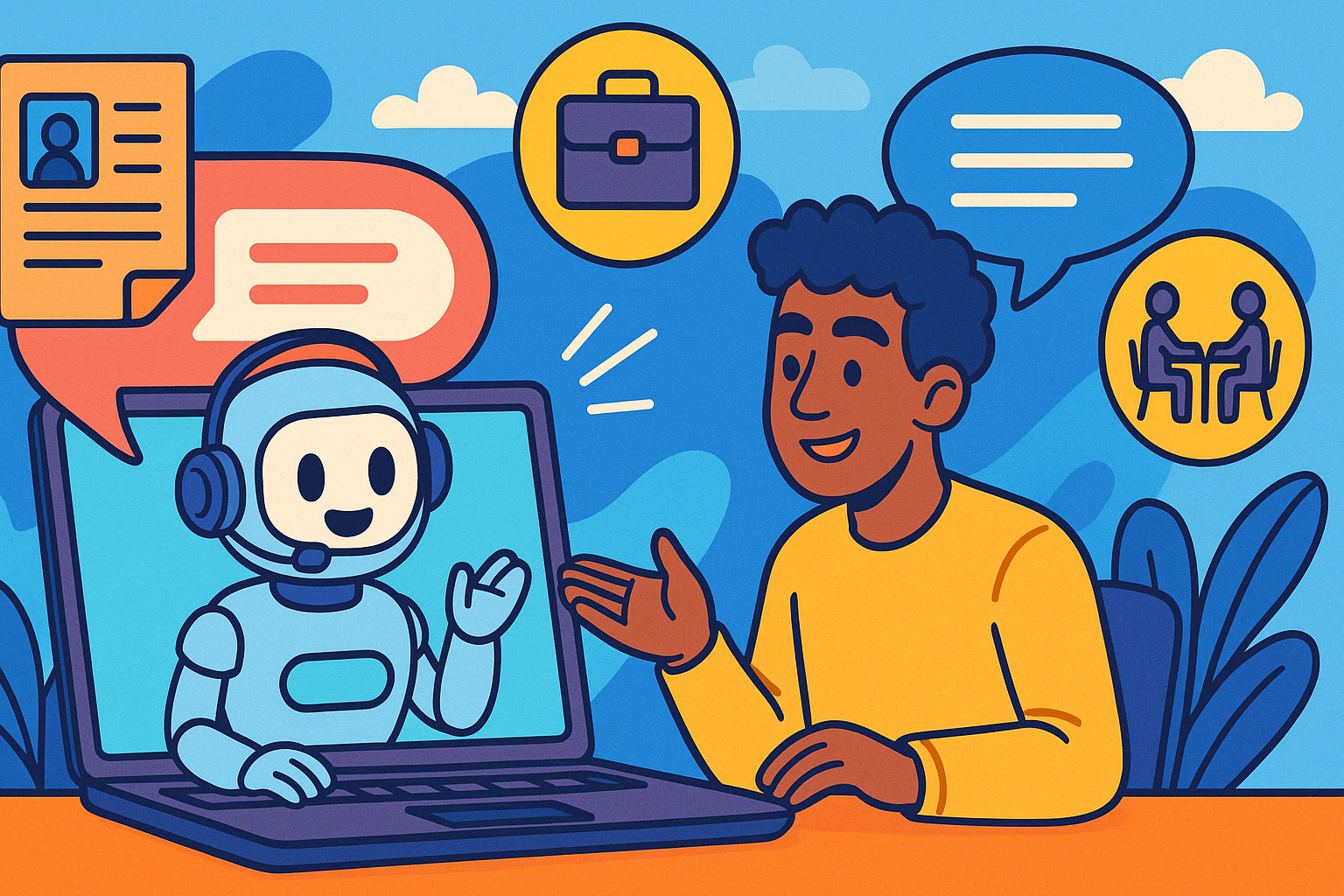Chatbot for Recruiting: In‑Depth Guide
Recruiting chatbots are no longer a novelty—they’re rapidly becoming a cornerstone of modern talent acquisition, offering scalable, personalized candidate engagement around the clock. This expanded guide dives deeper into their architecture, real‑world applications, key success metrics, implementation tips, and future innovations.
What Is a Recruiting Chatbot?
A recruiting chatbot is an AI‑driven virtual assistant embedded in career sites, social platforms, or messaging apps. Using natural language processing (NLP), it interacts with candidates in real time, answering FAQs, collecting application details, and even conducting basic qualification checks.
1. Core Architecture & Components
Natural Language Understanding (NLU) Engine
Parses candidate messages to identify intent (e.g., “ask about benefits” vs. “submit resume”).
Extracts entities (names, skills, locations) for downstream logic.
Conversation Flow Designer
Defines dialogues, quick‑reply buttons, and fallback prompts.
Supports branching (“If candidate answers ‘no’ to X, route to different flow”).
Screening & Qualification Module
Embeds “knockout” questions (e.g., legal work status, minimum experience).
Calculates a preliminary fit score based on responses.
Integration Layer
Connects to ATS/CRM: automatically creates candidate records, updates statuses.
Hooks into calendar systems for interview bookings and reminders.
Analytics & Feedback Loop
Dashboards track chatbot engagement, drop‑off points, and hand‑off rates.
Recruiter actions (e.g., “moved to interview”) feed back to retrain NLU models.
2. Real‑World Use Cases
High‑Volume Entry‑Level Hiring
Retail chains and call centers deploy chatbots to handle thousands of seasonal applications—screening candidates, answering FAQs, and scheduling group‑assessment slots without human intervention.Campus Recruiting
Universities’ career portals use chatbots during campus drives to instantly share application deadlines, internship program details, and allow students to submit portfolios or transcripts.Diversity Sourcing Initiatives
Chatbots can host “blind screenings” by anonymizing demographics until after qualification criteria are met, helping organizations reduce conscious or unconscious bias.

3. Measuring Success: Key Metrics
Engagement Rate: % of site visitors who interact with the bot vs. total visitors.
Qualification Rate: % of bot‑screened candidates who pass basic filters.
Conversion to Application: % of chatbot leads that submit full applications.
Time Saved: Average recruiter hours saved per 1000 engagements.
Candidate Satisfaction: Post‑chat surveys (e.g., “Was this helpful?” on a 1–5 scale).
4. Implementation Best Practices
Craft a Humanized Persona:
Give your bot a friendly name, tone, and simple avatar. A warm greeting sets a positive first impression.
Maintain a Living Knowledge Base:
Regularly update FAQs and job details. Stale information frustrates candidates and erodes trust.
Design for Graceful Handoffs:
Always include a clear path to a live recruiter when the bot can’t resolve an inquiry or a candidate requests it.
Ensure Data Privacy & Compliance:
Display a brief consent notice at chat start. Encrypt sensitive responses and purge data according to your retention policy.
Iterate with A/B Testing:
Test different question orders, button labels, or screening thresholds to optimize conversion and satisfaction.
5. Pitfalls & How to Avoid Them
Over‑Automation:
Bots that refuse to hand off frustrating queries risk alienating candidates. Always build in “I want to talk to a human” triggers.
Rigid Workflows:
Overly linear chat flows can dead‑end if a candidate’s phrasing isn’t anticipated. Use robust NLU and fallback prompts.
Ignoring Analytics:
Without monitoring drop‑off rates and unanswered intents, you miss opportunities to refine the bot’s knowledge.

6. Future Innovations
Voice & Multimodal Bots:
Integrating speech recognition and video to conduct initial phone screenings or even analyze presentation skills.
Emotion & Sentiment Analysis:
Detect candidate mood via text tone or voice cues, adapting bot replies for more empathetic interactions.
Predictive Role Recommendations:
Leveraging machine learning to suggest roles not only based on explicit input but on inferred career aspirations and market demand.
Cross‑Platform Continuity:
Allowing candidates to start on LinkedIn, continue on your website, and finish via mobile app—all with context preserved.
Related HR Glossary Terms
HR Glossary: Master the Language of Modern HR
Quick FAQ
Q: Can a chatbot truly replace a recruiter?
No—chatbots excel at repetitive, high‑volume tasks, but human judgment remains critical for nuanced evaluations, final interviews, and relationship building.Q: How do we maintain bot accuracy over time?
Set up a monthly review of chat logs to identify new intents, update responses, and retrain your NLP models.Q: Is a custom‑build bot better than an off‑the‑shelf solution?
It depends on complexity and budget. Off‑the‑shelf platforms accelerate deployment and cover core needs; custom builds offer deeper integration and tailored workflows.
By combining thoughtful design, continuous learning, and seamless integration with your existing HR tech stack, recruiting chatbots can dramatically enhance candidate engagement, accelerate time‑to‑fill, and free your recruiters to focus on high‑impact hiring decisions.
From recruiting candidates to onboarding new team members, MokaHR gives your company everything you need to be great at hiring.
Subscribe for more information


